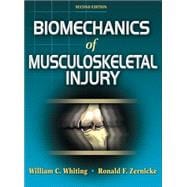
Note: Supplemental materials are not guaranteed with Rental or Used book purchases.
Purchase Benefits
What is included with this book?
| Overview and Perspectives on Injury | |
| Definition of Injury | |
| Perspectives on Injury | |
| Chapter Review | |
| Classification, Structure, and Function of Biological Tissues | |
| Embryology | |
| Tissue Types | |
| Arthrology | |
| Chapter Review | |
| Biomechanics | |
| Kinematics | |
| Kinetics | |
| Fluid Mechanics | |
| Joint Mechanics | |
| Material Mechanics | |
| Biomechanical Modeling and Simulation | |
| Chapter Review | |
| Tissue Biomechanics and Adaptation | |
| Biomechanics of Bone | |
| Adaptation of Bone | |
| Biomechanics and Adaptation of Other Connective Tissues | |
| Biomechanics of Skeletal Muscle | |
| Adaptation of Skeletal Muscle | |
| Chapter Review | |
| Concepts of Injury and Healing | |
| An Overview of Injury Mechanisms | |
| Principles of Injury | |
| Inflammation and Entrapment Conditions | |
| Injury in Bone | |
| Injury in Other Connective Tissues | |
| Injury in Joints | |
| Chapter Review | |
| Lower-Extremity Injuries | |
| Hip Injuries | |
| Thigh Injuries | |
| Knee Injuries | |
| Lower-Leg Injuries | |
| Ankle and Foot Injuries | |
| Chapter Review | |
| Upper-Extremity Injuries | |
| Shoulder Injuries | |
| Upper-Arm Injuries | |
| Elbow Injuries | |
| Forearm Injuries | |
| Wrist and Hand Injuries | |
| Chapter Review | |
| Head, Neck, and Trunk Injuries | |
| Head Injuries | |
| Neck Injuries | |
| Trunk Injuries | |
| Concluding Thoughts | |
| Chapter review | |
| Table of Contents provided by Publisher. All Rights Reserved. |
The New copy of this book will include any supplemental materials advertised. Please check the title of the book to determine if it should include any access cards, study guides, lab manuals, CDs, etc.
The Used, Rental and eBook copies of this book are not guaranteed to include any supplemental materials. Typically, only the book itself is included. This is true even if the title states it includes any access cards, study guides, lab manuals, CDs, etc.